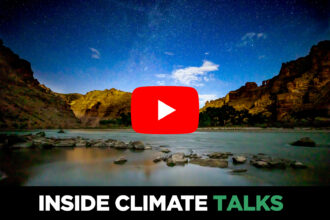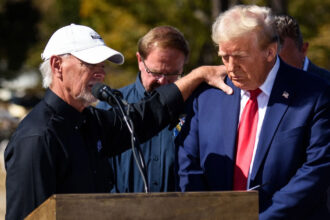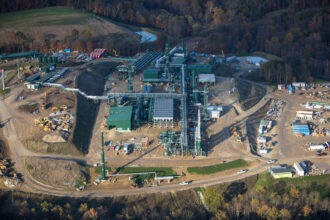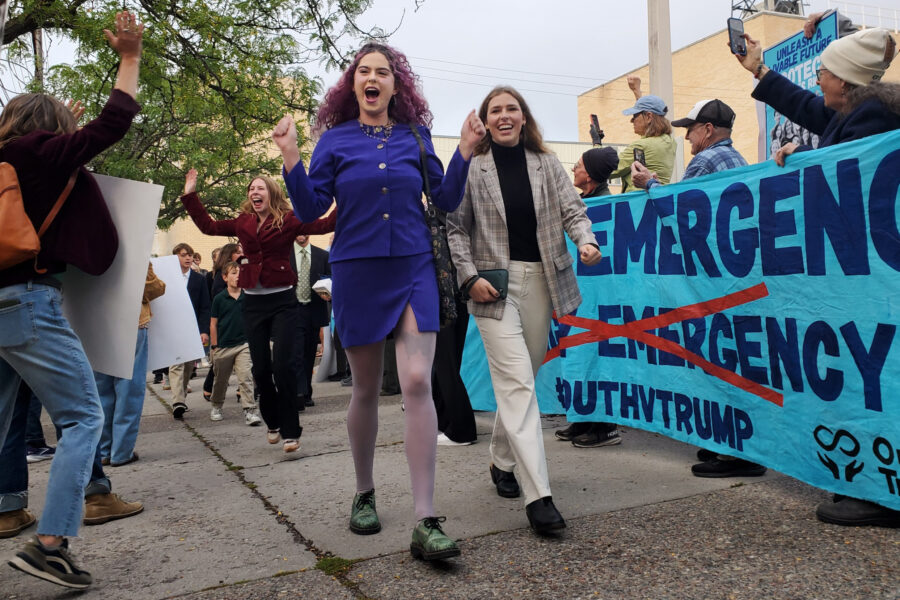The Texas Commission on Environmental Quality (TCEQ) is suddenly rolling in money for clean air initiatives under new legislation that gives the commission far greater access to fees and surcharges levied on vehicle transactions for emissions reductions.
But environmental activists decry a deal cut in the legislature in June that allocates 35 percent of the funds under the Texas Emissions Reduction Plan (TERP) to the Texas Department of Transportation to widen highways for “congestion mitigation.” The activists say building additional lanes is hardly a way to reduce air pollution.
“Texas has a deadly air pollution problem, so it’s unconscionable that the legislature raided the clean air fund,” said Luke Metzger, executive director of the nonprofit Environment Texas, calling the funding grab a violation of public trust.
Environmental activists also said they see little evidence that TCEQ will use its windfall in emissions reduction funds to either focus on so-called environmental justice communities, which have suffered disproportionate health impacts from air pollution, or aggressively promote the purchase of electric vehicles and the construction of EV charging stations, given the state’s deep ties to the oil and gas industry.
Adrian Shelley, Texas director of Public Citizen, said TCEQ behaves as if environmental justice doesn’t exist. “There’s no EJ office in TCEQ, there’s no statement about EJ principles in their materials. They don’t even use the word ‘environmental justice,’” he said.
Clay Pope, a Texas-based public affairs consultant experienced in environmental legislation, said that TCEQ’s emissions reduction plan needs to undergo a “philosophical change” from “focusing on getting older diesel engines off the road with newer diesel engines” to “transitioning to zero-emission vehicles and laying distribution infrastructure for charging stations in the state.”
Tiffany Young, a spokeswoman for TCEQ, said that emissions reduction projects “funded under TERP will continue to help reduce the potential exposure of communities to pollutants emitted from older vehicles and equipment. TCEQ will administer the TERP programs and funding in accordance with the requirements established by the state legislature.”
Using Clean Air Funds to Back Highway Bonds
Established in 2001, the TERP is funded through fees and surcharges assessed on vehicle purchases, leases, registrations and title transfers, and primarily offers grants to businesses, school districts, local governments and individuals to replace old, dirty diesel engines in cars, trucks and other vehicles with newer, cleaner models to reduce air pollution such as ground-level ozone or “smog.” The fees and surcharges generate as much as $250 million a year.
But, until the new legislation, about $150 million of the total went not to TCEQ, but to the Texas Mobility Fund, where under 2005 legislation it was used as collateral to certify TxDOT’s bond obligations. Once the bonds were certified, the funds would flow back into a special TERP account, where $2 billion currently remains unspent. Under this previous arrangement, the Texas legislature would each year allocate the remaining TERP funds of around $75 million to TCEQ for emissions reduction efforts.
A new funding arrangement was first proposed in May 2019 when Rep. Cecil Bell Jr., a Republican from Rosenberg, put forth a bill to make all of the TERP money available to TCEQ for emissions reductions, as opposed to using it to back up TxDOT bonds. Activist groups hailed the move.
But state Sen. Robert Nichols of Jacksonville, the powerful chairman of the Senate transportation committee, and Rep. Brooks Landgraf of Odessa lobbied in favor of splitting the TERP funds between TCEQ and TxDOT. In June, Rep. Landgraf’s bill—HB 4472—formally allocated “no less than 35 percent” of clean air funds to TxDOT, leaving roughly 65 percent for TERP.
Under the legislation, TxDOT will receive around $90 million, while TCEQ’s allocation would more than double, from the prior $75 million to around $160 million.
Environmental groups opposed the legislation, saying $90 million in funds collected for clean air programs should not be going to TxDOT to widen roads. “What we really wanted was not to give any money from TERP,” said Cyrus Reed, interim director of the Lone Star Chapter of the Sierra Club. “At least in one version of the bill, the House agreed to that. But the Senate proposed giving 40 percent. So, the compromise was 35 percent, which doesn’t seem like a compromise to me.”
TCEQ Has Not Directly Invested in Environmental Justice
Texas has a serious air pollution problem. According to the latest TERP report, the eight-county Harris, Galveston and Brazoria area and the 10-county Dallas-Fort Worth area are currently classified by the Environmental Protection Agency as being in “serious nonattainment” under the National Ambient Air Quality Standard (NAAQS). The EPA could reclassify them to “severe nonattainment” if they failed to meet the 2008 ozone standard, the report said.
El Paso is the latest addition to the nonattainment list with elevated Particulate Matter (PM10) concentrations in the air. TCEQ estimates that vehicles are responsible for as much as 75 percent of nitrogen oxide emissions, one of the main drivers of ozone, in certain non-attainment areas in Texas.
According to the EPA, ozone in the air is harmful to public health, especially on hot sunny days, and a greater risk to people with asthma. Nitrogen oxide reacts with Volatile Organic Compounds (VOCs) such as benzene, ethylene glycol and formaldehyde, in the presence of sunlight to form ambient ozone. TERP seeks to remove nitrogen oxides from the air in a cost-effective way.
A recent study by Harvard University estimated some 17,000 Texans die annually from air pollution.
Given TCEQ’s new funding for emissions reductions, Elena Craft, senior director for climate and health at the nonprofit Environmental Defense Fund (EDF), said now is the perfect time for the commission to focus on clean air efforts in communities of color and low-income neighborhoods. Research shows the health of residents in such environmental justice communities is disproportionately affected by air pollution.
“Traditionally, nonattainment areas for health-based standards of air pollutants have been eligible for TERP dollars, or near nonattainment areas,” she said. “But TCEQ has not directly invested in EJ communities despite the disparities that exist in those communities. I think it’s time for the agency to prioritize many of these communities that have received such a burden of pollution over the years.”
Shelley, Texas director of Public Citizen, said that there are a number of ways to strengthen how TERP can extend its benefits to those communities disproportionately impacted by air pollution from mobile sources, especially around industrial facilities and highways with a lot of vehicular traffic.
“Because the program reduces transportation pollution, TERP has a deep impact on public health in environmental justice communities in Texas,” he said. “If TCEQ can get its act together, administer the fund better, and spend the extra 200 percent money that it’s getting, it can provide significantly more public health benefit to the entire state. And that will uplift minority and environmental justice communities as much as anything that the state does.”
It’s Time to Go Electric
Environmental activists said one potent new strategy for expanding public health benefits under TERP could be to focus on subsidizing the purchase of electric cars and trucks.
A December 2020 analysis by the Environmental Defense Fund concluded Texas’ emission reduction program “could be even more powerful if it went electric—not just for reducing smog-forming nitrogen oxides and other local air pollutants, but for cutting greenhouse gas emissions and sparking job growth in the burgeoning electric vehicle industry.”
The study pointed out the bulk of TERP funding has gone into replacing medium- and heavy-duty diesel vehicles. Under its Diesel Emissions Reduction Incentive Program (DERI), TERP has provided over $1 billion to replace or upgrade 19,955 diesel vehicles and pieces of equipment since 2001.
In contrast, the program has only awarded a little over $6.6 million in grants for the purchase and installation of electric charging stations from 2012 to August 2021, according to TCEQ. About $15 million has been paid out as rebates for the purchase or lease of electric vehicles from 2014 to August 2021.
This story is funded by readers like you.
Our nonprofit newsroom provides award-winning climate coverage free of charge and advertising. We rely on donations from readers like you to keep going. Please donate now to support our work.
Donate NowEDF estimates “applying TERP’s annual grants to spur the electrification of Texas’ truck and bus fleets would decrease NOx emissions faster and for as little as one-third the cost per ton of nitrogen oxides compared to TERP’s past grant programs.”
EDF’s Craft said there is a strong lobby in Texas for natural gas vehicles and natural gas infrastructure. “I would say we’re starting to see some lobbying for hydrogen technologies,” she continued. “I feel like there is sort of a willingness to move away from the diesel engines. But it’s not to jump toward the EVs, which is not surprising given Texas’ history with the oil and gas.”
Experts argue that there is all the more reason for programs like TERP to provide grants and other incentives for electrification of infrastructure in view of the clean job figures that continue to climb.
A recent report from the Texas Advanced Energy Business Alliance estimated that jobs in the electric transportation sector are likely to double by 2024 in Texas alone. The study says more than 400,000 workers and 5,000 Texas companies would benefit from the increased demand and growth in this sector.
More evidence has trickled in that supports electrification. The Environmental Defense Fund analysis shows “a single year of TERP funding could cut the cost of 1,875 transit buses by $120,000 each.” It said that combined with lower annual maintenance costs, the higher upfront cost for each electric bus would be completely recouped within five years.
“And the environmental payoff would be huge. Those electric buses would eliminate 1 million tons of greenhouse gas emissions and 477 tons of NOx emissions per year,” the report estimates.
Pope, the public affairs consultant, said the program staff at TCEQ need legislative direction to make more creative changes within the program. ”I think it is incumbent upon those of us pushing for EV’s to further justify the beneficial ozone impacts of electrification,” he said. “That means we’re going to need further studies that show the true benefit of electrification of transportation.”
Metzger, of Environment Texas, said that big oil companies have in the past succeeded in killing legislative proposals that would have required cleaner cars or even electric vehicles. He doesn’t think the Texas legislature is going to pass a law anytime soon to incentivize electric cars or to mandate TCEQ do that.
“I think even to this day, there’s still some skepticism about the technology among legislators,” he said. “But I think Texans are generally very excited about electric vehicles,” and he remains “optimistic that we will continue to expand the rebate program that will help Texans buy electric cars.”
About This Story
Perhaps you noticed: This story, like all the news we publish, is free to read. That’s because Inside Climate News is a 501c3 nonprofit organization. We do not charge a subscription fee, lock our news behind a paywall, or clutter our website with ads. We make our news on climate and the environment freely available to you and anyone who wants it.
That’s not all. We also share our news for free with scores of other media organizations around the country. Many of them can’t afford to do environmental journalism of their own. We’ve built bureaus from coast to coast to report local stories, collaborate with local newsrooms and co-publish articles so that this vital work is shared as widely as possible.
Two of us launched ICN in 2007. Six years later we earned a Pulitzer Prize for National Reporting, and now we run the oldest and largest dedicated climate newsroom in the nation. We tell the story in all its complexity. We hold polluters accountable. We expose environmental injustice. We debunk misinformation. We scrutinize solutions and inspire action.
Donations from readers like you fund every aspect of what we do. If you don’t already, will you support our ongoing work, our reporting on the biggest crisis facing our planet, and help us reach even more readers in more places?
Please take a moment to make a tax-deductible donation. Every one of them makes a difference.
Thank you,














